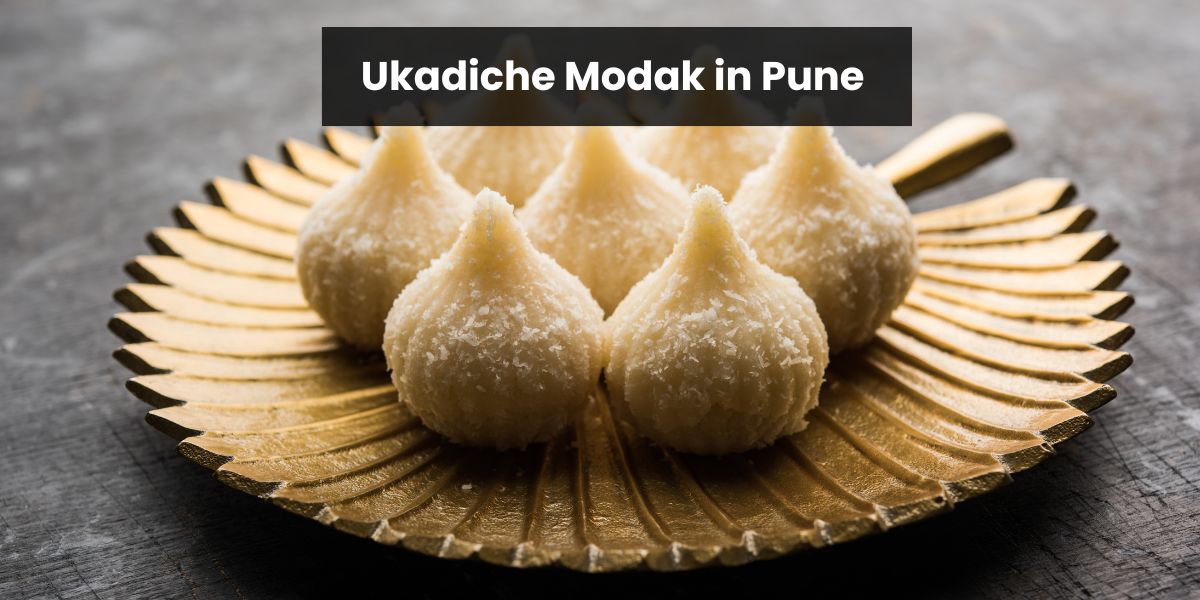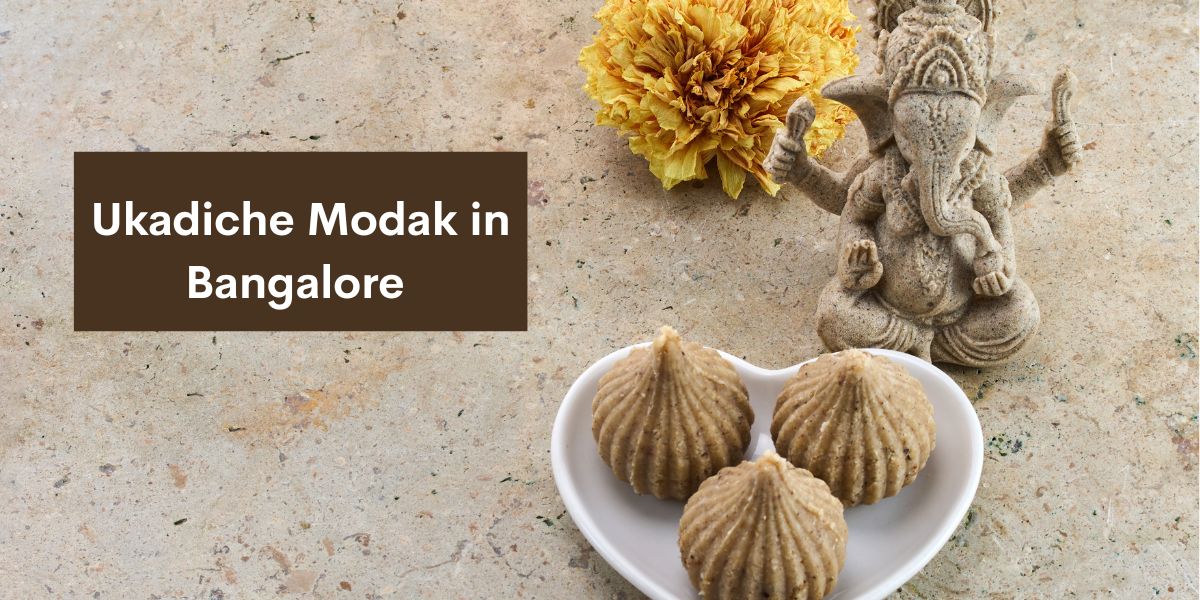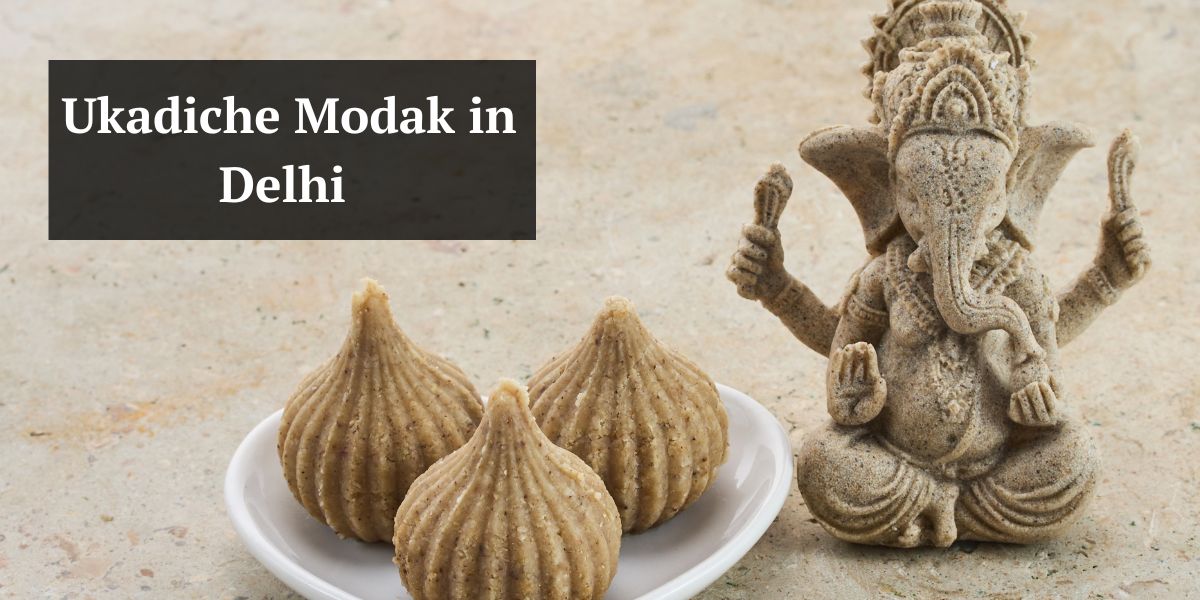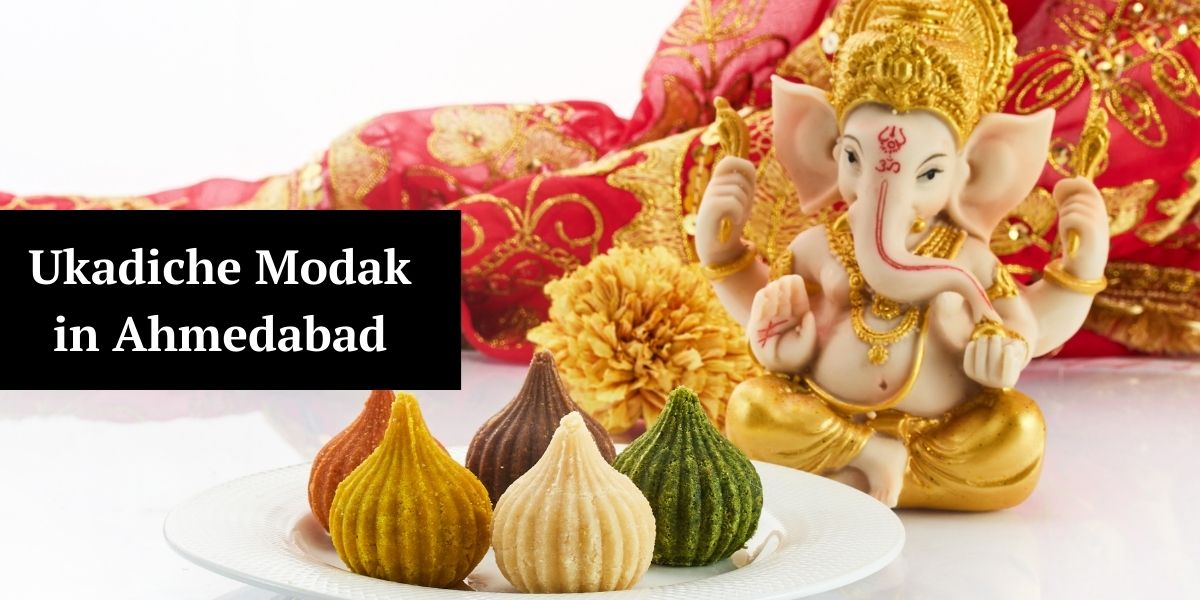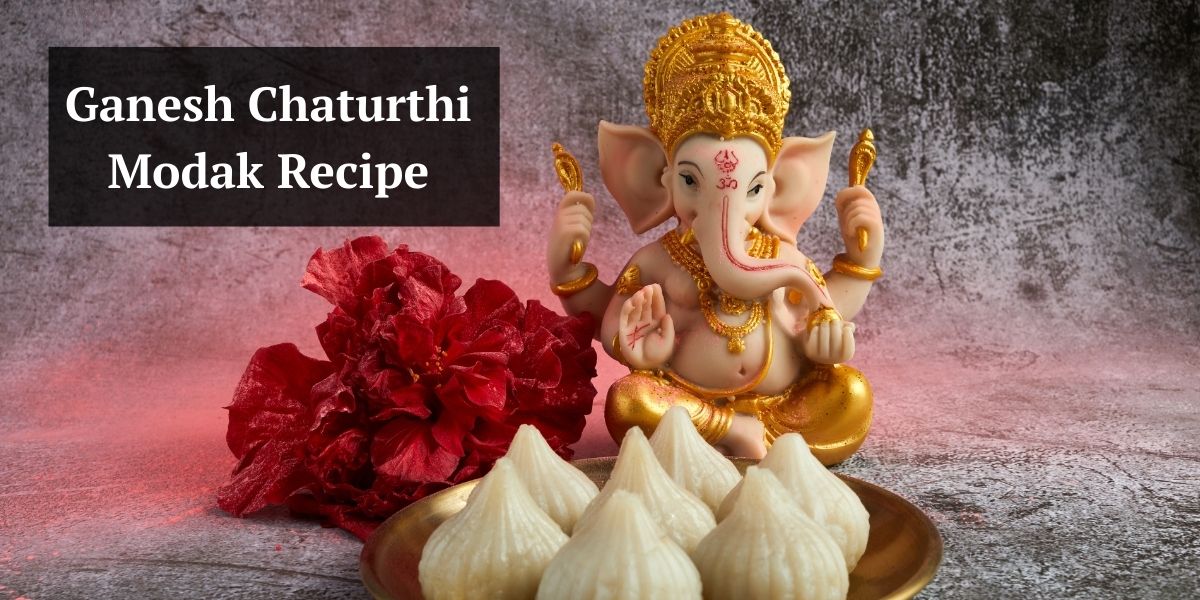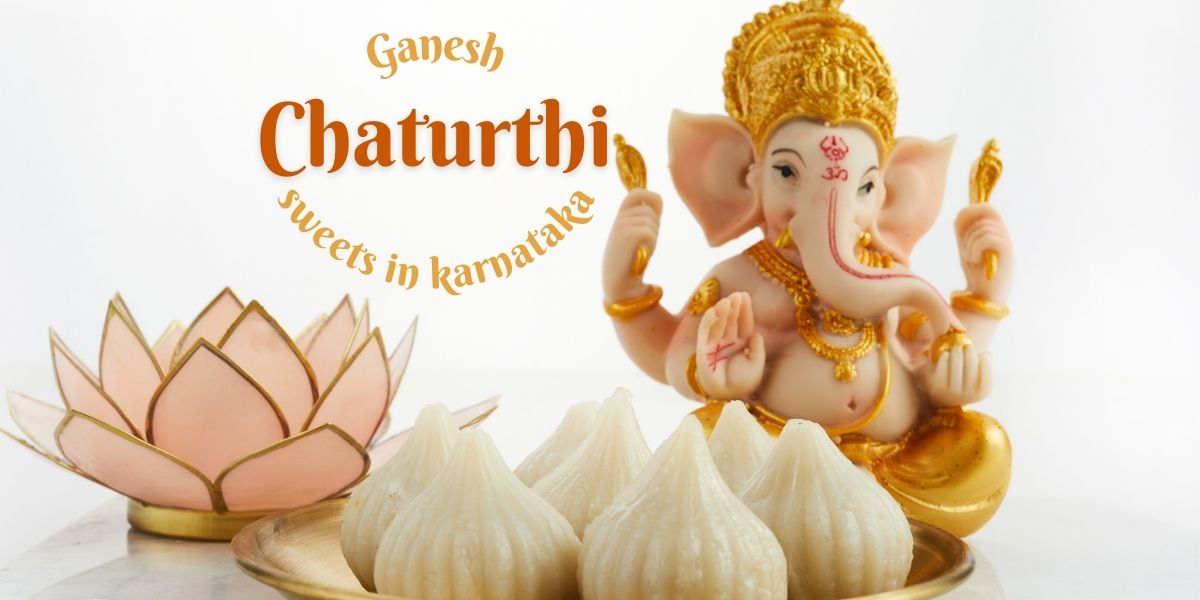Ganesh Chaturthi, marking the birth of Lord Ganesha, is among the most cherished and widely celebrated festivals in the Hindu tradition across India. Idols of Lord Ganesha are positioned in homes and public spaces, prayers are offered, and several customs are observed during the ten-day celebration, which is celebrated with grandeur and devotion. As among of the festival’s cherished customs, modaks—believed to be Lord Ganesha’s favourite dessert—are made and served. Everything you need to know about Ganesh Chaturthi Modak Recipe is covered on this site, including ingredients, preparation methods, traditional and contemporary recipes, and even well-known instructions like those from Hebbars Kitchen. This guide will assist you in creating a truly unique modak for your festival, regardless of your level of experience in the kitchen.
Modak’s delicate rice flour crust and delicious coconut-jaggery filling represent devotion, sweetness, and spiritual fulfilment. Lord Ganesha is commonly referred to in the Bible as the modakapriya, or “the one who loves modak”. As part of the naivedya (offering) during the puja, 21 modaks are customarily offered to him.
The simple modak has taken on many different shapes over the years, including steamed, fried, chocolate-filled, dried fruit-laden, and more, but the fundamental component of the offering has remained the same: a confection made with affection and served with commitment.
Ganesh Chaturthi Special Modak Recipe
Today, modak comes in a wide variety, but the most well-known and spiritually significant is the conventional steamed version, known as Ukadiche Modak. During Ganesh Chaturthi, “ukadiche”, which translates to “steamed” in Marathi, Karnataka, Maharashtra, and some parts of South India, it’s a popular meal.
There are two components to this modak
- The exterior shell, which is composed of rice flour, needs to be malleable, smooth, and soft.
- A delicious and fragrant blend of freshly grated coconut, cardamom, and jaggery makes up the inside filling.
Although it takes some time, making steamed modak is incredibly fulfilling and frequently a family or communal event during the festival.
Traditional Ukadiche Modak – Overview
Servings: Cooks around 15–18 modaks.
Duration of Preparation: 30 minutes
Cooking Duration: 30 minutes
Overview of the Ingredients
Regarding the outer shell:
- One cup of rice flour
- One-half cup of water
- One teaspoon of ghee
- A pinch of salt
Regarding the filling:
- One cup of freshly grated coconut
- A half-cup of powdered or crushed jaggery
- ½ teaspoon of cardamom powder
- Dry fruits or poppies (optional)
Flavour Additions (Optional)
To enhance the filling’s aroma and complexity, some homes add a teaspoon of nutmeg, a spoonful of sesame seeds, or even saffron. Depending on your particular preferences or the traditions of your family, you can also try different flavours.
For anyone who likes to keep to traditional offerings but yet wants to savour the subtle sweetness and comforting perfume that only a modak can deliver, this recipe is perfect.
How to Prepare Ganesh Chaturthi Modak Recipe
Modak preparation is a meticulous procedure that takes some patience, particularly if you’re cooking it for the first time. Every stage, though, has its roots in history and aids in the cook’s understanding of the offering’s spiritual significance. The three primary processes in the preparation process include creating the outside dough, getting the filling ready, and shaping and steaming the modaks.
Step 1: Prepare the Sweet Coconut-Jaggery Filling
- Set a sturdy, heavy-bottomed pan or kadhai on medium heat to begin the cooking process.
- Add the jaggery and grated coconut.
- Keep stirring over medium heat until the jaggery fully dissolves and merges evenly with the grated coconut, forming a fragrant, well-blended mixture.
- Cook until the mixture begins to separate from the pan’s sides and thickens somewhat.
- Mix thoroughly after adding the cardamom powder. Add poppy seeds or dry fruits if desired.
- Once the mixture is well combined, remove it from the heat and spread it out slightly on a plate to help it cool down evenly before handling.
Pro Tip: Don’t overcook the filling because it could get thicker when cooled.
Check Out – Best Sweets for Ganesh Chaturthi
Step 2: Make the Rice Flour Dough
- Heat 1¼ cups of water in a large pot until it boils.
- A pinch of salt and 1 teaspoon of ghee should be added.
- Lower the flame and gently stir while slowly sprinkling in the rice flour, ensuring a smooth mixture without lumps.
- The dough should join together and form a soft ball after being stirred.
- Put a lid on it and leave it for four to five minutes.
- Handle the dough with care until it’s warm and smooth. To make handling the dough easier, wet your palms if necessary.
Texture Tip: The dough should be flexible and soft. Knead again after adding a few droplets of warm water if it’s too dry. Sprinkle with a bit of extra rice flour if it’s too sticky.
Step 3: Shape and Steam the Modaks
This is the most imaginative—and occasionally difficult—step in the procedure. Modaks can be moulded by hand or using a modak mould. Although handcrafted modaks are charmingly rustic and traditional, moulds guarantee consistency and are simpler for novices.
To shape modaks by hand:
- To keep your hands from sticking while shaping, lightly moisten them with water or a small amount of ghee.
- Flatten a little ball of the rice flour dough with your fingertips into a tiny disc.
- Form a little cup by pressing the edges thinner than the centre.
- Place a small portion of the sweet coconut and jaggery mixture right in the center of the flattened dough disc.
- Carefully collect the dough’s upper edges and pinch them together at the top to create the distinctive teardrop shape, which seals the filling inside.
To use a mould
- Grease the modak mould’s interior.
- Line the interior surface of the mould by placing a tiny amount of dough on both sides and pressing.
- Spoon about one tablespoon of the sweet coconut mixture into the middle of the flattened dough circle, ensuring it is evenly placed.
- To seal it, cover the bottom with a bit of additional dough.
Once all modaks are shaped
- Place them on a banana leaf or steamer plate that has been oiled.
- Let the modaks cook in the steamer for about 10 to 12 minutes until they appear glossy and slightly translucent.
- Once fully steamed, the modaks will take on a slightly translucent appearance, indicating they are ready.
- Before serving, take them out and allow them to cool slightly.
Optional Touch: To add lustre and aroma, lightly brush the modaks with ghee before serving.
Ganpati Chocolate Modak
Modern versions of classic modaks are also growing in popularity, particularly among younger devotees and children, despite their timeless worth. Chocolate Modak is a delicious twist that blends the sanctity of traditional offerings with a taste that suits contemporary preferences.
Simple to create, chocolate modaks are a wonderful accompaniment to more traditional sweets.
Chocolate Modak Recipe Overview
A popular holiday dessert is given a contemporary makeover with Chocolate Modak, a delectable blend of tradition and decadence. These modaks are easy to create and a hit with kids of all ages, making them ideal for Ganesh Chaturthi.
Ingredients: Dark or milk chocolate (1 cup, finely chopped), sweetened condensed milk (½ cup), cocoa powder (1 tbsp, optional), ghee (1 tsp), chopped dry fruits – cashews, almonds, pistachios (optional).
Preparation Steps for Ganesh Chaturthi Modak Recipe
- Using a double boiler or microwave, slowly melt the chocolate, stirring now and then, until it is smooth and lump-free.
- Stir thoroughly until well combined after adding the condensed milk.
- Add the cocoa powder if you’d like, and boil over medium heat for 2 to 3 minutes, or until the flavors are well combined.
- Turn off the heat and allow the mixture to cool slightly, ensuring it reaches a manageable temperature for handling.
- Use ghee to grease the modak moulds.
- Carefully pour the chocolate mixture into the moulds, gently pressing it to ensure it takes shape and fills the mould evenly.
- Before serving, demold and chill the modaks for 15 to 20 minutes.
These chocolate modaks are wonderful festive sweets, especially for giving or prasad distribution, and they keep well in the refrigerator for up to a week.
Flavour Variants
- Add a drop of vanilla or rose essence for fragrance.
- Add desiccated coconut or biscuit crumbs to improve the texture and give the modaks a deeper bite.
- Stuff a nut or some gulkand into the centre for a surprise.
Ganesh Chaturthi Modak Ingredients
Modaks are actually made from a small amount of materials, despite their seeming intricacy. The symphony of flavours and textures is what makes this recipe so unique, and it is slightly altered in each home based on family traditions.
The components that are most frequently used for different types of modak are explained in detail below:
For Traditional Steamed Modak (Ukadiche Modak)
Outer Dough
- Rice Flour: The main component of the exterior cover. Always use fine-quality rice flour for the best results.
- Water: Used to bind the flour and form a dough by steaming.
- Ghee: Makes the dough smoother and keeps it from sticking.
- Salt: A tiny teaspoon to provide taste.
Filling
- Fresh Grated Coconut: The filling’s star, adding texture and a hint of sweetness.
- Jaggery: Historically used for sweetness, it is lucky to be around at festivals.
- Cardamom Powder: For aroma and taste.
- Poppy Seeds / Dry Fruits: Optional, but give crunchiness and richness.
For Fried Modak
- Instead of using rice flour for the shell, use maida or wheat flour.
- The filling is still the same—it’s made of coconut and jaggery.
- Once formed, the modaks are meticulously deep-fried until they take on a crispy, golden appearance.
For Chocolate Modak
- Milk or dark chocolate
- Milk that has been condensed
- Ghee
- Powdered cocoa
- Nuts or dry fruits (optional)
For Modak Variations
- Dry Fruit Modak: Prepared by rolling a mixture of dates and powdered dry fruits into modak forms.
- Mawa Modak: A rich and indulgent treat prepared using khoya (thickened milk), sugar, and a hint of cardamom for aroma.
Tip: Since coconut and jaggery are prone to spoiling, always use fresh ingredients. Modaks retain flavour and texture when prepared in small, fresh batches.
Related – Ganesh Chaturthi Sweets in Karnataka
Ganesh Chaturthi Modak Hebbars Kitchen
Hebbars Kitchen has established a reputation for providing clean, simple-to-follow recipes in contemporary Indian cooking courses, particularly those that highlight South Indian and festival-specific cuisine. Many home cooks, especially those in their younger years or who are new to cooking, turn to Hebbars Kitchen for classic recipes prepared more straightforwardly.
Two main factors have contributed to the widespread success of their modak recipes, especially the Ukadiche and Chocolate versions:
- Visual instructions: Each step is described using pictures or brief films, which greatly simplifies complicated recipes.
- Beginner-friendly advice: They offer simple solutions and alternatives, including using store-bought rice flour, modak moulds, or steaming in pressure cookers.
Highlights from Hebbars Kitchen’s Modak Recipe Style
- Use of moulds: Highly advised, especially for novices, with detailed shaping instructions.
- Options for filling: To accommodate various regional tastes, they frequently offer variants, such as the addition of dry fruits, sesame seeds, or nutmeg.
- Gluten-free advice: Their dishes suit dietary requirements well because rice flour is naturally gluten-free.
- Mawa Modak and Instant Modak: These quick recipes, which use mawa and condensed milk, are particularly well-liked by working professionals and those making big quantities for pujas.
The Hebbars Kitchen edition is a great place to start if you want to make modaks for the first time or just want a quick reference for measurements and methods. It’s also excellent for experimenting with imaginative variants while maintaining the offering’s devotional purpose.
Conclusion for Ganesh Chaturthi Modak Recipe
The modak is a symbolic offering with profound spiritual meaning in addition to being a delicious pleasure. It symbolises dedication, contentment, and the attitude of sharing during Ganesh Chaturthi—values that are ingrained in the customs of the celebration. From the intricate moulding of steamed variations to the rich, luscious chocolate varieties, each manufactured modak is a special manifestation of love and faith in Lord Ganesha.
The spiritual essence of modak has not altered, despite changes in its flavours and forms over time. The fundamental element is the same whether you’re attempting a new variety like dry fruit or mawa modak, following an ancestral family recipe, or watching a YouTube instruction.
The act of dedication in the kitchen, the aroma of coconut and jaggery filling your home, and the shared thrill of indulging in something sacred are all important aspects of preparing modak.
I hope that this Ganesh Chaturthi brings honey into your home, honesty into your prayers, and perfection into your modaks.
FAQs for Ganesh Chaturthi Modak Recipe
Q1. During Ganesh Chaturthi, what is the most traditional modak served?
Ans:- Ukadiche Modak is a traditional steamed sweet dumpling made with a soft rice flour covering and a rich filling of coconut and jaggery. Revered as Lord Ganesha’s favourite offering, it holds deep cultural and devotional significance.
Q2. Do I need a mould to manufacture modak?
Ans:- Indeed, modaks can be manually formed into a tiny cup with your fingers, then pinched at the top. Although it requires some practice, the rewards are great.
Q3. How long are modaks created at home?
Ans:- Modaks are best eaten fresh, within 24 hours of steaming. Chocolate and fried modaks can be kept in an airtight container, where they usually stay fresh for about 3 to 5 days.
Q4. Can modaks be prepared using store-bought rice flour instead of homemade?
Ans:- It is possible to use high-quality store-bought rice flour. A smooth, lump-free dough can be achieved by making sure it is fresh and sifted.
Q5. Are there any quick or no-cook modak recipes available?
Ans:- Yes. You can make chocolate modaks and mawa modaks without steaming. Condensed milk or dates are used in several recipes to make quick, no-cook versions.
Q6. Why is chocolate modak appropriate for Ganesh Chaturthi?
Ans:- Modern fusion chocolate modak is particularly well-liked by kids. Despite not being traditional, it can nevertheless be offered with fervour and is frequently produced in conjunction with more conventional types.
Q7. Where can I locate recipes for modak that include illustrations?
Ans:- For recipes with illustrations, Hebbars Kitchen is an excellent website. Additionally, YouTube offers a number of thorough tutorials for users of various skill levels.


